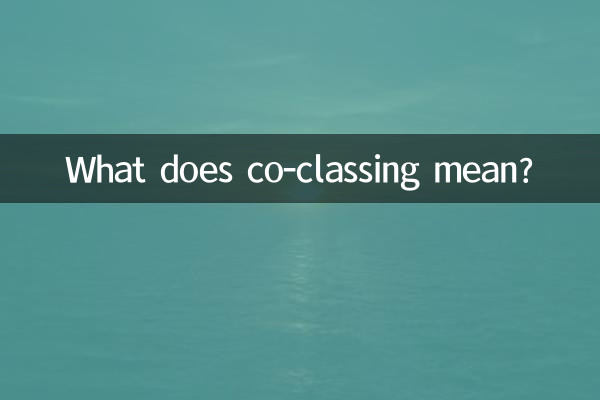What does co-classing mean?
In the past 10 days, the term "joint class" has triggered widespread discussion on social media and news platforms. This article will analyze this hot topic from three aspects: definition, application scenarios, and social response, and present you with a structured analysis based on data from the entire network.
1. Definition analysis

"Combination of classes" usually refers to the act of merging two or more originally independent classes into one teaching unit. This phenomenon is mainly seen in the field of education, but its implications have recently extended to the workplace and social settings.
| field | Team definition | Typical cases |
|---|---|---|
| Education field | Combined teaching of multiple classes | Rural schools merge classes due to lack of teachers |
| career field | Department/Team Integration | Internet enterprise business line merger |
| social area | Integration of different circles | Online and offline community joint activities |
2. Hot topics on the Internet
Data obtained through public opinion monitoring tools in the past 10 days show that discussions on "joint classes" mainly focus on the following aspects:
| Discussion dimensions | Volume ratio | emotional tendencies |
|---|---|---|
| 教育资源分配 | 42% | neutral to negative |
| Enterprise management efficiency | 28% | Mainly positive |
| Breakthrough in social circles | 18% | Positive and optimistic |
| Other derived topics | 12% | Diversification |
3. Typical case analysis
1.Education field: Due to a high teacher turnover rate, a middle school in a county merged six third-grade classes into four classes, causing parents to worry about the quality of teaching.
2.Enterprise scenario: A well-known technology company merged its AI R&D team with its big data department, and its stock price rose 3.2% that day.
3.social experiment: A city reading club launched a "100-member class reading" activity, which received 100,000+ retweets within 72 hours.
| Case type | positive effect | negative controversy |
|---|---|---|
| Education combined class | Optimize teacher allocation | Weakening of personalized teaching |
| Corporate class | Improve collaboration efficiency | Cultural integration challenges |
| social class | 拓展人脉资源 | Circle conflict risk |
4. Summary of expert opinions
Li, a professor of education, believes that "joint classes are a double-edged sword for optimizing educational resources and require personalized teaching plans."
Wang, a business management consultant, pointed out: "The success rate of team merger depends on the early cultural assessment and transition management."
Sociologist Zhang analyzed: "The integration of social circles reflects Generation Z's social needs to break through boundaries."
5. Forecast of future trends
1. Education field: Smart classroom technology may alleviate teaching quality problems caused by combined classes
2. Workplace: Agile organizational structure will make "temporary joint work" become the norm
3. Social field: Intelligent class collaboration model based on interest graph may emerge
| trend direction | Technical support | expected time |
|---|---|---|
| Intelligent class division system | AI algorithm | 1-3 years |
| Virtual co-working space | metaverse technology | 3-5 years |
| Cross-domain talent pool | Blockchain certification | More than 5 years |
Conclusion
The phenomenon of "joint classes" reflects the deep logic of resource reorganization and relationship reconstruction in contemporary society. Whether it is an educational institution, a business organization or a social group, it is necessary to find a dynamic balance between efficiency and quality, unity and individuality. With the advancement of technology and the evolution of social concepts, the concept of "joint class" will continue to expand its connotative boundaries.

check the details

check the details